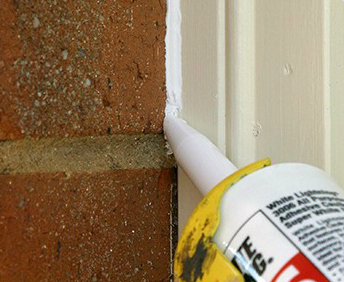Complete DIY Home Energy Audit, Fall Maintenance to Find and Fix Potential Trouble Spots
There’s a persistent nip in the air these days here in northern Georgia. That can only mean one thing: winter, and its falling temperatures, is right around the corner. With lower temperatures come rising energy costs. But don’t despair—a few quick and easy solutions to common household energy problems can help you save energy and money this winter.
Autumn Audit
According to the U.S. Department of Energy, most homeowners can save anywhere from 5 to 30 percent on their utility bills by finding and fixing energy-wasting trouble spots around the house.
Most homeowners can save anywhere from 5 to 30 percent on their utility bills by finding and fixing energy-wasting trouble spots.
An easy way to identify common problems is to perform a short, do-it-yourself energy audit. A home energy audit can help you understand the whole picture of your home's energy use. You can determine how much energy your home uses, where it’s losing energy and which problem areas and fixes you should prioritize to make your home more efficient and comfortable.
A home energy audit should be your first step before tackling any fall improvement projects. Walton EMC offers Home Energy Saver, a simple online energy audit tool. In less than 5 minutes, you can provide information about your home and receive custom recommendations for making it more energy efficient.
WATCH: Walton EMC’s Do-It-Yourself Home Energy Audit
Five Easy Projects
Walton EMC Energy Advisor Rigs Santos offers these tried-and-true fall maintenance projects that will help keep your home warm and the power bill in check this winter.
1. Focus on filters. Yes it's easy to forget, but it's important to replace or clean heating system filters once a month during colder months. Dirty filters restrict airflow and increase energy demand. Tip: Mark a date on your calendar to change filters. If your filters are disposable, stock up on enough new ones to get through the winter.
2. Suck it up. A clean furnace runs much more efficiently, so vacuum any debris or accumulated dust around the furnace filter. Then, tackle the vents throughout the house.
3. Dodge the drafts. According to the U.S. Department of Energy, drafts can waste 5 to 30 percent of your energy use. Use this easy trick to check for drafts: Close the window or door on a one-dollar bill. If you can pull the bill out of the closed door or window, it's time for new weather-stripping or caulking. Both weather-stripping and caulk are very affordable materials that take only minutes to install.

4. Get your ducts in a row. In a typical house, about 20 to 30 percent of the air that moves through the duct system is lost due to leaks, holes and poorly connected ducts. Energystar.gov suggests sealing air leaks using mastic sealant or metal tape. Seal leaks on all the ducts you can access in places such as attics, crawlspaces, unfinished basements and garages. Also, make sure that the connections at vents and registers are tightly sealed where they meet the floors, walls and ceiling.
5. Turn it down. Many conventional water heaters are set to 140 degrees Fahrenheit by installers, but most households don't need that much steam, and end up paying for it — both in dollars and the occasional scalding burn. Lowering the temperature to 120 degrees Fahrenheit (or lower) would reduce your water heating costs by 6 to 10 percent.
Now that you know how to conduct a do-it-yourself home energy audit and have some fall maintenance ideas, it's time to get moving. The key to a cozy winter is getting all of this done before it’s time to break out the winter coat.